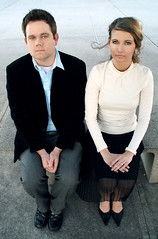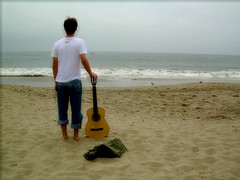... a lesson in changing your social media tactics.
@4StatesNews vomiting blind links.
Today, I'm going to give you an example. My local NBC (KSN) and ABC (KODE) news affiliates have a combined Twitter account and I'm convinced they're using social media simply because everyone else is. There doesn't seem to be much of a game plan, they rarely (if ever) interact with their viewers, and much of what they are doing makes them look like a spammer.
So, @4StatesNews, if you're reading this I would like to offer a little advice on repairing your current social media strategy. It's a simple start, but it will help create some value in your social media endeavors.
3 Social Media Tactics @4StatesNews Should Change
- Blind Links. I thought no one but spammers, phishing schemes, and bots did this. Actually even most of those will carry with them some sort of spammy headline with an 'lol' attached at the end. Here's the deal, @4StatesNews, most people with even basic knowledge of the Internet won't click on blind links. You must have a headline of some kind to let people know what they're going to. You may be a trusted name in local news on the TV, but when it comes to the Internet, it's a different ballgame.
Suggested Solution: This is a simple fix. Just start adding headlines every single time. If your link leads to story about a local police officer dying, say that. Let us in on where we're going. Your viewers want to know the link is safe before they commit to a click.
Tweet blind links. People make up their own headlines. - Using Your Facebook Fan Page as a Landing Page. Once you've repaired your problem of blind links, it's time to do something different about where those links go. All of your links go to your Facebook fan page. I get it. You want people to follow you on Facebook too, but you need to be treating them as two different tools. When I click on a link that I think is going to send me to a story about the snow storm coming in, I don't want to have to click on another link to bypass your Facebook page. How many people get to the Facebook page and then just quit clicking through? How much more traffic would you get to your site if the links you are sending out on Twitter actually went directly to your site. How many of your viewers don't have a Facebook page? Do you think they like being directed in one direction before they get the story they were looking for?
Suggested Solution: I think it's clear. Stop using your Facebook fan page as a landing site. Direct your viewers straight to the story you want them to see. Don't make the journey any harder than one simple click. If you want people to become a fan on Facebook, use Twitter to invite them to become a fan on occasion, but don't back door the invitation by using the fan page as your landing site. - Engage Your Viewers. Having a presence on all the key social media outlets doesn't mean you're engaging your viewers. It doesn't even mean they're paying attention. In fact, if you're constantly sending them blind links that redirect them to Facebook, they may be paying little attention at all. It doesn't mean you have to be online all the time. It just means you @, RT, or DM them when you can on Twitter. It means you respond to comments on your Facebook page when you can. I hate to say it, but your local news competitor KOAM TV 7 does a much better job at this. They interact with their viewers regularly and will even retweet stories that don't go back to their site.
Suggested Solution: As often as possible, interact. If your follower on Twitter has taken the time to @ you, take the a couple of seconds to respond back. If your follower on Twitter retweeted your story, take a moment to tell them thank you. It will go a long way in encouraging them to retweet your links in the future. The great myth about social media is that it's easy. The great truth about social media is that it works best when you engage people.
This isn't something I just recently stumbled across. My friend, Stan Kost has been asking for some time why the blind links are being sent out (among other things). I've joined in on some of those conversations, but they've always been one-sided because there is never any interaction. Just more blind links, Facebook, and now Stan mocking the blind links with funny, fake headlines.
So, @4StatesNews, why have you signed up for social media? Why sign up if you're not going to do it right?















3 comments:
Nice post and a good reminder to those of us using Twitter for a business to keep it human and conversational. The one thing I am not sure I agree with is #2. I am betting that this is the Facebook fan page integration with Twitter. We've been using this for some time with great success. It has helped blend our FB and Twitter audience and we've never had any complaints about those links.
You have a valid point, Michael.
I get the logic behind integration of your social media outlets and I see where it could add some value. But, I always feel like you're toeing a line between efficiency & losing your human element. Almost like automated answering services. Sure, they help when it comes to efficiency, but most people would rather know they're dealing with a real human being on the other end.
We are still finding our corporate voice on Twitter, so FB has been a much more productive community for us. Our experience has been a more human element when we move traffic into FB. Especially as it often brings the community in touch with one another (this can be a bit tough in Twitter). It has had a similar affect to posting a link on Twitter to a blog post or your blog. It isnt like we are driving them to a money page, we are bringing them to an alternate conversation.
Post a Comment